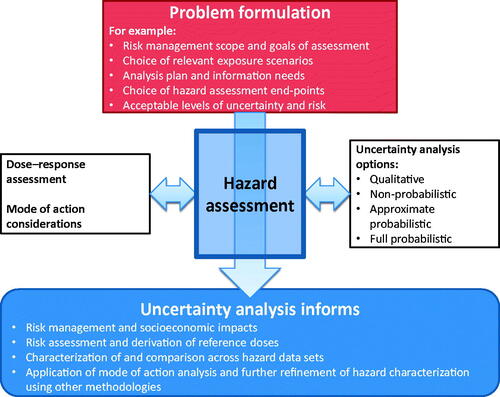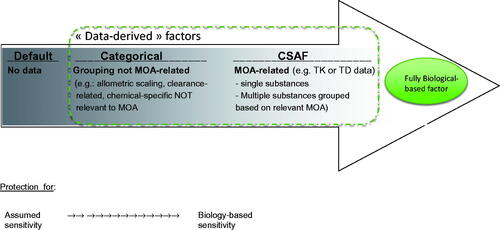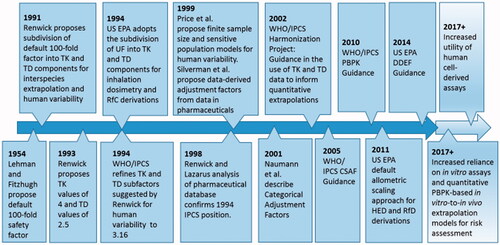Figures & data
Figure 1. Conceptual representation of WHO/IPCS’ problem formulation and its relationship with various tiers of increasing complexity of hazard characterization.

Figure 2. Relationship of the consideration of uncertainty relevant to problem formulation and tiered assessment (amended from WHO/IPCS Citation2014).

Figure 3. Subdivision of default uncertainty factors into toxicokinetic and toxicodynamic subfactors for the derivation of CSAF.

Figure 4. Evolutionary timeline of the major developments surrounding the WHO/IPCS (Citation2005) CSAF Guidance.

Figure 5. Continuum between default uncertainty factors and CSAF and relationship with fully biological-based adjustment factors, as a function of the available data. The directional arrow and intensity of the gray shade corresponds to increased robustness and decreased uncertainty.

Table 1. Some CSAF examples not retrieved by the original literature search terms.
Table 2. Geographic distribution of CSAF used in regulatory decision-making compared with non-regulatory or investigative CSAFTable Footnotea.
